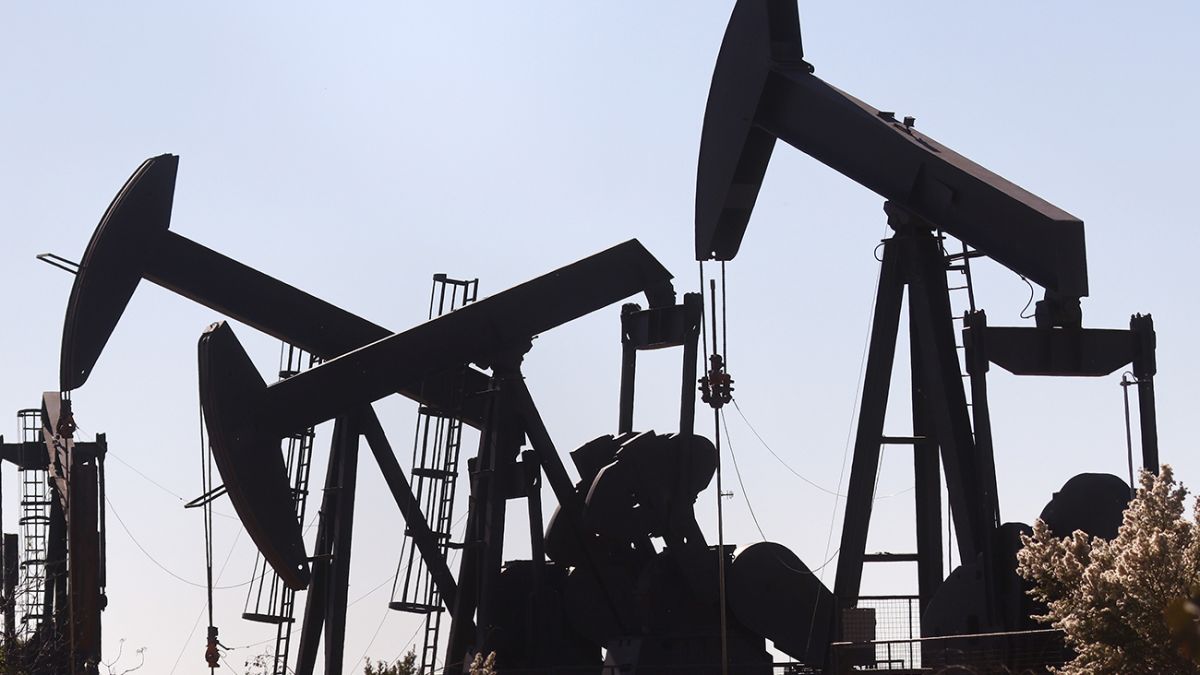Oil prices fall amid expectations of Trump-Putin meeting
11 August 10:08
Oil prices declined in Asian trading on Monday, continuing the more than 4% drop that occurred last week. Investors are reacting to the talks between the US and Russia on the Russian-Ukrainian war, which are scheduled to take place next week, "Komersant Ukrainian" reports citing Reuters.
Futures for Brent crude oil fell 62 cents, or 0.93%, to $65.97 per barrel as of 08:31 Kyiv time. At the same time, prices for U.S. WTI crude oil fell by 69 cents, or 1.08%, to $63.19.
Expectations of a possible end to sanctions restricting the supply of Russian oil to international markets have increased after US President Donald Trump said on Friday that he would meet with Russian President Vladimir Putin on August 15 in Alaska.
Paradoxes of anti-Russian policy
The talks are taking place amid increased U.S. pressure on Russia, raising the possibility that sanctions against Moscow could also be tightened if a peace deal is not reached.
“If the peace talks fail and the conflict drags on, the market could quickly turn bullish, potentially causing a sharp spike in oil prices,”
– said Sugandha Sachdeva, founder of New Delhi-based research firm SS WealthStreet.
However, high oil prices are exactly what Russia needs.
Trump set a deadline of last Friday for Russia to agree to peace or face secondary sanctions on buyers of its oil.
Friday passed, but no sanctions were imposed.
Читайте нас у Telegram: головні новини коротко
Pressure on India
The only visible US measures in this direction are Washington’s pressure on India to reduce its purchases of Russian oil.
According to the Energy Aspects consulting company, Indian refiners have already purchased a total of 5 million barrels of US WTI for August deliveries, with the possibility of additional 5 million barrels depending on the results of the tenders, as well as 5 million barrels for September deliveries.
WTI arbitrage to Asia remains open, and India looks set to continue absorbing US crude in the near term, Energy Aspects noted in a weekly note.
Market outlook
Trump’s higher tariffs on imports from dozens of countries, which came into effect on Thursday, are expected to negatively impact economic activity as they force changes in supply chains and fuel higher inflation.
Under pressure from the gloomy economic outlook, Brent fell 4.4% in the week ended Friday, while WTI dropped 5.1%.
“The near-term direction will depend on several key events, including the August 15 meeting between the US and Russian presidents, upcoming speeches by Federal Reserve officials, and the release of US consumer price index data,”
– Sachdeva added.
Separately, data from the National Bureau of Statistics released on Saturday showed that producer prices in China fell more than expected in July, while consumer prices remained flat. This underscores how weak domestic demand and ongoing trade uncertainty are weighing on consumer and business sentiment.
Читайте нас у Telegram: головні новини коротко
How to hurt Russia over oil
It is well known that Russia is critically dependent on its energy exports. First and foremost, on oil exports. In 2024, the Russian federal budget revenues from oil sales amounted to 9.19 trillion rubles (approximately $89.4 billion). Total budget revenues for this period amounted to 36.71 trillion rubles. Thus, the share of oil revenues in the total structure of Russian budget revenues in 2024 was approximately 25%
This indicates that, despite international sanctions and attempts to diversify revenue sources, oil remains a key source of financing for the Russian budget.
Russian Urals oil is traditionally sold at a lower price than Brent and WTI, and it is also subject to additional factors that raw materials from other countries do not experience, namely Western sanctions. However, during all three years of the full-scale war with Ukraine, Russia has been successfully selling its oil – its main buyers today are China and India.
The federal budget of the Russian Federation for 2025 included an oil price of $70. However, according to the Ministry of Finance, on August 7, the price of Russian Urals was $63.17 per barrel. Against this backdrop, the Russian state budget deficit has already amounted to 4.88 trillion rubles, or 2.2% of GDP, and more than a trillion of this has been accumulated over the past month. This hole in the treasury is almost 4.5 times higher than in the same period in 2024, when the deficit was 1.1 trillion rubles, or 0.5% of GDP.
So far, market analysts’ forecasts do not promise Russia any serious problems related to the oil price, as it still has a very large backlash for sales. According to economic expert Oleg Pendzin, even a price of $50 per barrel is still acceptable for Russia.
“Currently, the direct cost of Russian oil production is about $37-38 per barrel. This is the direct cost. The critical figure for Russia is the sales price of $45,”
– the economist explained exclusively for .
Therefore, the most likely way to hurt Russia over oil is still to increase sanctions, including secondary sanctions against its buyers. The point of this step is to make it physically impossible for Russia to sell large volumes of oil and thus receive funds to continue its aggressive war of aggression.









